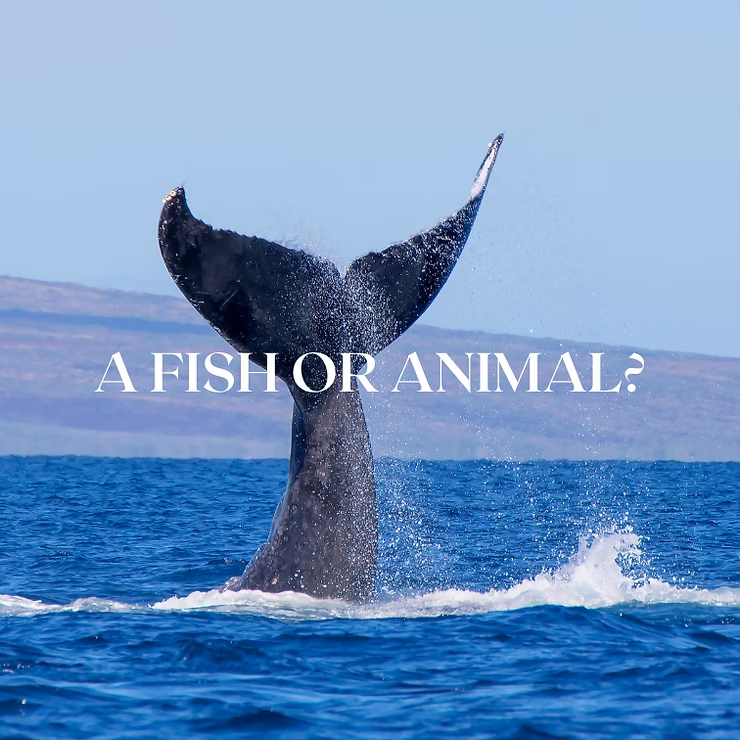Whale: A Fish or Animal?
Whales are the largest mammals in the ocean, growing up to 100 feet long and weighing as much as 200 tons. They have streamlined bodies and a blowhole on top of their heads for breathing, making them perfectly adapted to life in the water.
Whale Anatomy: Similarities to Fish
While whales share some features with fish, such as streamlined bodies and fins, they differ in important ways. Whales have smooth skin with blubber for insulation, whereas fish have scales. Whale fins are more like limbs of land animals, and they use a fluke (tail) for propulsion.
Whale Behavior: More Like an Animal
Whales exhibit complex social structures, communicate through vocalizations, and show maternal care. Their highly developed brains allow them to learn, remember, and adapt, further proving they are mammals, not fish.
Whale vs. Fish: Key Differences
Classification: Mammal vs. Fish
Whales give birth to live young, nurse with milk, and are warm-blooded. Fish are cold-blooded, lay eggs, and use gills to breathe.
Respiration: Lungs vs. Gills
Whales breathe through lungs and must surface to inhale air via their blowhole. Fish extract oxygen from water using gills.
Reproduction: Live Birth vs. Egg-Laying
Whales give birth to live calves and provide nurturing care, while fish lay eggs and leave them to develop independently.
Whale Adaptations: Surviving in the Ocean
Blubber: Insulation and Buoyancy
Blubber keeps whales warm, provides buoyancy, and stores energy. Different species have varying blubber thickness:
| Whale Species | Blubber Thickness (inches) |
|---|---|
| Blue Whale | 11-14 |
| Orca | 3-5 |
| Humpback | 3-6 |
Sonar: Echolocation for Navigation
Whales use echolocation to locate prey and navigate through the ocean, sending high-frequency sounds and interpreting returning echoes—like a natural GPS.
Migration: Long-Distance Travel
Whales migrate thousands of miles annually to find food and breeding grounds. Their blubber and echolocation abilities enable them to endure these long journeys efficiently.
Conclusion
Whales are highly adapted marine mammals with incredible physical and behavioral traits. Support ocean conservation and learn more about these majestic creatures through Save Our Blue Ocean. Discover our collection of turtle, shark, and whale bracelets and help protect our blue ocean for future generations.

